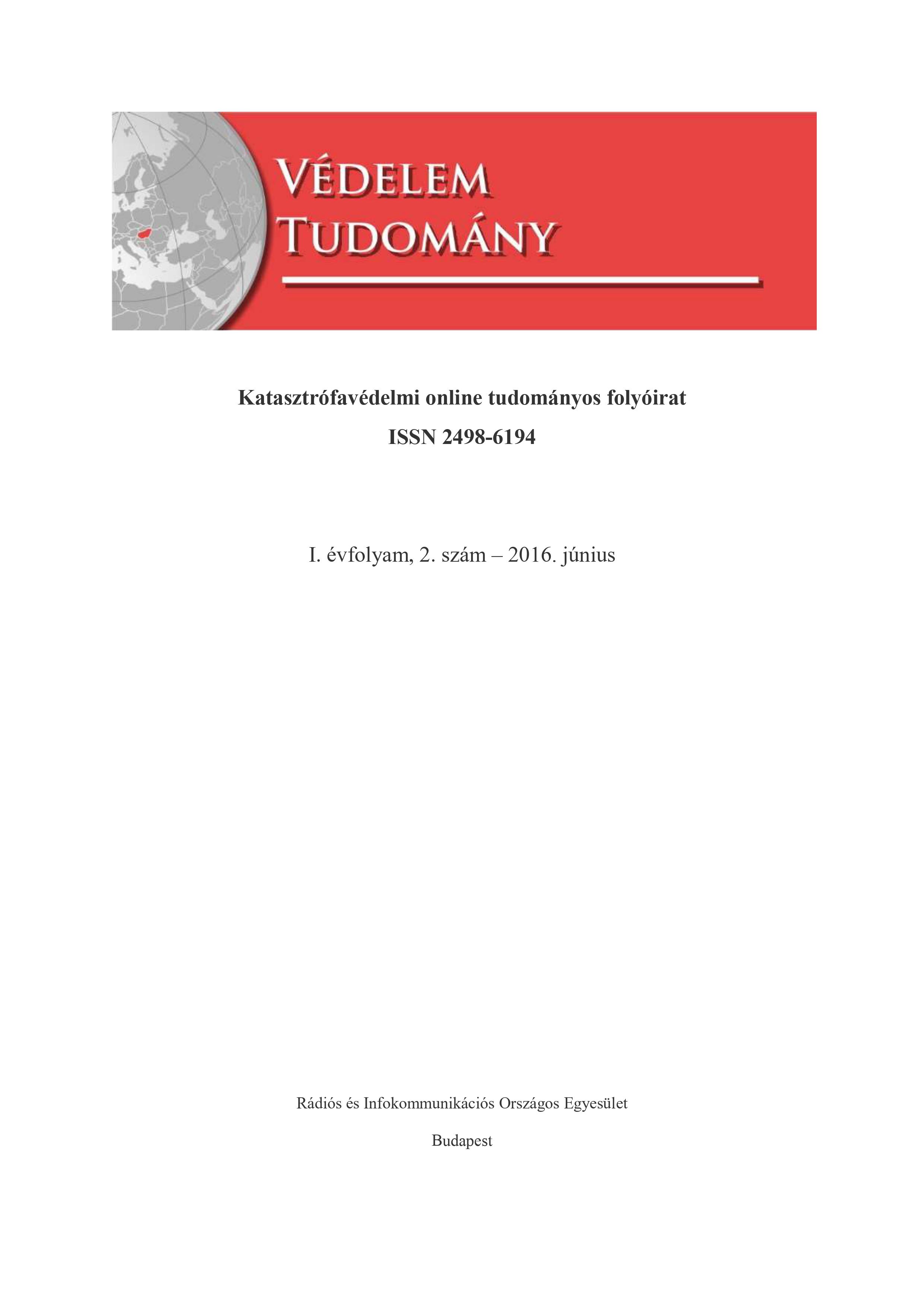Methodological studies for measuring foam effectiveness: suppression capability measuring the water equivalence of the isolation effect
Abstract
Introduction: It is well-known, aerial firefighting is a very expensive solution however bombing just pure water is not always enough to suppress the fires. In many cases special agents are added to water to increase its efficiency. Methods: This research used dried pine wood pieces as samples. Samples were divided into different groups: not treated samples for giving the reference data or treated samples to ensure data for calculating the isolation effect of foam. During the experiment a 3% foam solution was mixed. From this solution 6 – 9 – 12 expansion rate foams were generated. Samples were also provided with 2 – 5 mm high metal ring to ensure the exact depth of foam blanket. Each sample was put in a special heat oven which ensured the permanent 35 kWm-2 heat fluxes and measured the different ignition time. Results: Experiment demonstrated that the ignition times in case of foams are longer than in case of same equivalent pure water. It comes from the isolation effect of the foam, which can be expressed by the water equivalent up to 2.3 values.
References
American Society for Testing and Materials. Standard Test Method for Determining Material Ignition and Flame Spread properties; E1321-1997(02)
Batista, A.C.: Combustion characteristics tests of Magnolia grandiflora and Michelia champaca for potential use in fuelbreaks in south region of Brazil, Wildfire 2011 Conference, Sun City, South Africa, 2011.05.9-13.
Bleszity, J., Zelenák, M.: Tűzvédelmi ismeretek, Budapest: Szövetkezeti Szervezési Iroda, 272 p. 1990
Boyd, C.F., Merzo, M. 1996 Fire Protection Foam Behavior in a Radiative Environment; Final Report, Mechanical Engineering Department, University of Maryland, US
Igishev, V.G., Portola V.A. 1993 Evaluation of foam parameters in extinction of selfignition sources; Mine Aerodynamics, Institute of Mining, Russian Academy of Sciences, Prokopyevsk, Fiziko-Tekhnicheskie Problemy Razrabotki Poleznykh Iskopaemykh, No. 4, Russia
Morris C.J.: A simulation study of fuel treatment effects in dry forests of the western United States: testing the principles of a fire-safe forest, Wildfire 2011 Conference, Sun City, South Africa, 2011.05.9-13.
Pantya, P.: A tűzoltói beavatkozás biztonságának növelése zárttéri tüzeknél (Safety of firefighters during interventions in different areas), HADMÉRNÖK 6: (1) pp. 165-171.
Salgado, J., Paz-Andrade, M.I. 2009 The effect of Firesorb as a fire retardant on the thermal properties of a heated soil; Journal of Thermal Analysis and Calorimetry, Vol. (2009) 3, Akadémiai Kiadó, Budapest, Hungary
STP 2007 Standard Test Procedures, Evaluation of Wildland Fire Chemicals, Lateral Ignition and Flame Spread (LIFT), STP 2.2, Revised 5/30/07, Department of Agricultural, Forest Service, US Source: http://www.fs.fed.us/rm/fire/wfcs/tests/documents/stp_02-_2.pdf Internet, letöltés: 2012.08.28.
Underwriters Laboratories Inc. Project Reports to USDA Forest Service; 98NK32277, 99NK35219, 01NK12843, 03NK13445, 04NK16188, and 06CA42655.
Copyright (c) 2023 Defence Science

This work is licensed under a Creative Commons Attribution-NonCommercial 4.0 International License.




